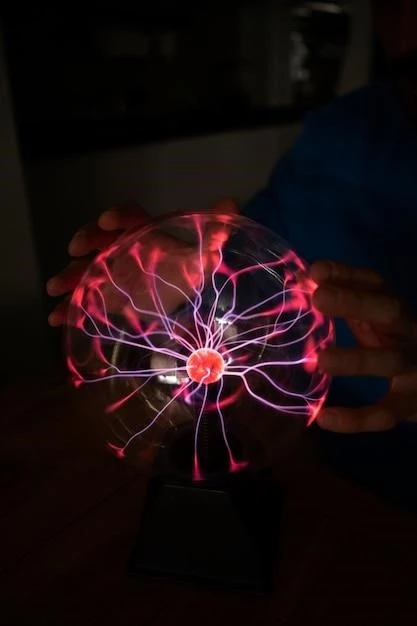Overview of Cerebral Calcification
Cerebral calcification is a condition characterized by the accumulation of calcium deposits
Description of Cerebral Calcification
Cerebral calcification involves the abnormal accumulation of calcium deposits in the brain’s tissues. These deposits can affect brain function and may be associated with various neurological symptoms. The calcifications can be identified through imaging techniques such as CT scans or MRIs.
Possible Causes of Cerebral Calcification
Cerebral calcification can be caused by various factors‚ including metabolic disorders‚ infections‚ genetic predisposition‚ head trauma‚ or exposure to toxins. Conditions like Fahr’s syndrome‚ certain infections‚ and autoimmune disorders can also lead to cerebral calcifications. Proper evaluation by healthcare professionals is crucial to determine the underlying cause.
Causes of Cerebellar Hypoplasia
Cerebellar hypoplasia may result from genetic factors or exposure to harmful environmental influences.
Genetic Factors leading to Cerebellar Hypoplasia
Cerebellar hypoplasia can be caused by genetic mutations that affect the development of the cerebellum during embryonic growth. Disorders such as Joubert syndrome‚ Dandy-Walker malformation‚ and certain chromosomal abnormalities are known to be associated with cerebellar hypoplasia due to genetic factors.
Environmental Factors contributing to Cerebellar Hypoplasia
Exposure to environmental toxins‚ maternal infections during pregnancy‚ alcohol consumption‚ drug use‚ and certain medications can contribute to cerebellar hypoplasia. Inadequate prenatal care or nutritional deficiencies can also impact the development of the cerebellum‚ highlighting the role of environmental factors in this condition.
Symptoms of Cerebral Calcification
Various symptoms such as headaches‚ seizures‚ movement difficulties‚ cognitive impairment can occur.
Common Symptoms of Cerebral Calcification
Common symptoms of cerebral calcification may include headaches‚ seizures‚ cognitive decline‚ movement disorders‚ and neuropsychiatric abnormalities. These symptoms can vary in severity and are often indicative of underlying neurological issues that require medical evaluation and management.
Severe Symptoms indicating Cerebral Calcification
Severe symptoms of cerebral calcification may manifest as recurrent‚ severe seizures‚ progressive neurologic impairment‚ loss of consciousness‚ and debilitating movement disorders. These symptoms can significantly impact a person’s quality of life and require prompt medical intervention to address the underlying cause of the calcifications and manage the associated complications effectively.
Diagnosis of Cerebellar Hypoplasia
Accurate diagnosis involves physical examination and specialized imaging tests.
Physical Examination for Cerebellar Hypoplasia
Physical examination for cerebellar hypoplasia involves assessing coordination‚ balance‚ motor skills‚ and reflexes. Neurological examinations can help identify signs of developmental abnormalities in the cerebellum. Observation of gait‚ muscle tone‚ and overall neurological function is crucial in diagnosing cerebellar hypoplasia.
Diagnostic Tests and Imaging Techniques for Cerebellar Hypoplasia
Diagnostic tests for cerebellar hypoplasia include brain imaging such as MRI or CT scans to visualize the structure of the cerebellum. Genetic testing may be conducted to identify underlying genetic causes. Blood tests can help assess for any metabolic abnormalities contributing to the condition. These diagnostic tools aid in accurately diagnosing cerebellar hypoplasia and guiding appropriate treatment strategies.

Treatment options for Cerebral Calcification
Treatment typically involves addressing underlying causes and managing symptoms.
Medication-based Treatments for Cerebral Calcification
Medication can be used to manage symptoms associated with cerebral calcification‚ such as antiepileptic drugs for seizures‚ pain medications for headaches‚ and cognitive enhancers. Treatment aims to alleviate symptoms and improve quality of life for individuals affected by cerebral calcifications.
Surgical Interventions for Cerebral Calcification
In some cases of severe cerebral calcification causing complications like hydrocephalus or increased intracranial pressure‚ surgical interventions may be necessary. Procedures such as ventriculoperitoneal shunting or surgical removal of calcified lesions can be considered to alleviate symptoms and improve the patient’s neurological condition.
Prognosis of Cerebellar Hypoplasia
The prognosis varies depending on the underlying cause and the severity of the condition.
Short-term Prognosis for Cerebellar Hypoplasia
The short-term prognosis for cerebellar hypoplasia involves symptom management and supportive care. Prompt diagnosis and appropriate interventions can help improve short-term outcomes and reduce complications associated with the condition. Close monitoring and follow-up are essential for assessing progress and adjusting treatment strategies as needed.
Long-term Prognosis for Cerebellar Hypoplasia
The long-term prognosis for cerebellar hypoplasia depends on the individual’s response to treatment‚ the extent of neurological impairments‚ and any associated complications. Rehabilitation programs‚ ongoing medical care‚ and multidisciplinary support can help optimize long-term outcomes and enhance the quality of life for individuals with cerebellar hypoplasia.
Research on Cerebral Calcification
Ongoing studies aim to better understand the mechanisms‚ risk factors‚ and potential treatments.
Current Studies and Findings on Cerebral Calcification
Recent research explores the genetic and environmental factors contributing to cerebral calcification. Studies are investigating novel treatment approaches to address the underlying causes and improve outcomes for patients with this condition. Advances in imaging techniques are aiding in the early detection and monitoring of cerebral calcifications.
Ongoing Research Directions in the Field of Cerebral Calcification
Current research is focusing on developing targeted therapies and precision medicine approaches for cerebral calcification. Investigation into neuroprotective strategies‚ understanding the role of inflammatory processes‚ and exploring potential biomarkers are key areas of ongoing research. Collaborative efforts seek to improve diagnostic accuracy‚ treatment efficacy‚ and long-term outcomes for individuals affected by cerebral calcifications.
Prevention of Cerebellar Hypoplasia
Preventive measures aim to address genetic and environmental factors that contribute to the condition.
Preventive Measures for Genetic Cerebellar Hypoplasia
Preventive strategies for genetic cerebellar hypoplasia include genetic counseling‚ prenatal screening‚ and early detection to enable timely intervention. Understanding the inheritance pattern and risk factors can help families make informed decisions and potentially reduce the risk of passing genetic mutations associated with cerebellar hypoplasia to future generations.
Preventive Strategies for Environmental Cerebellar Hypoplasia
Preventive strategies for environmental cerebellar hypoplasia include avoiding exposure to toxins‚ maintaining a healthy lifestyle‚ ensuring proper prenatal care‚ and minimizing the use of substances known to contribute to developmental abnormalities. Education on environmental risk factors and promoting a safe and supportive environment can help reduce the incidence of cerebellar hypoplasia related to environmental influences.
